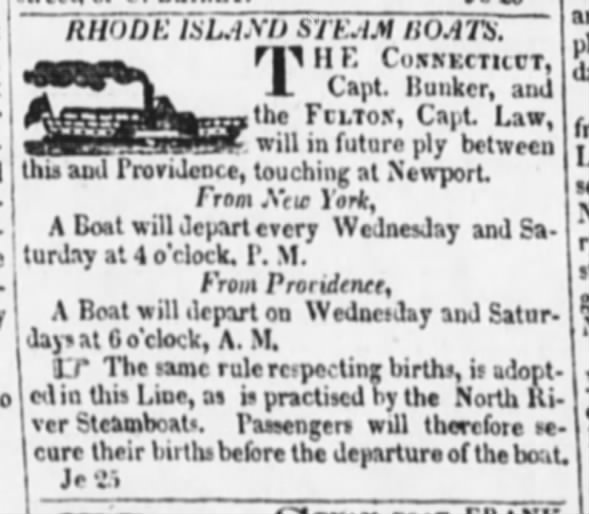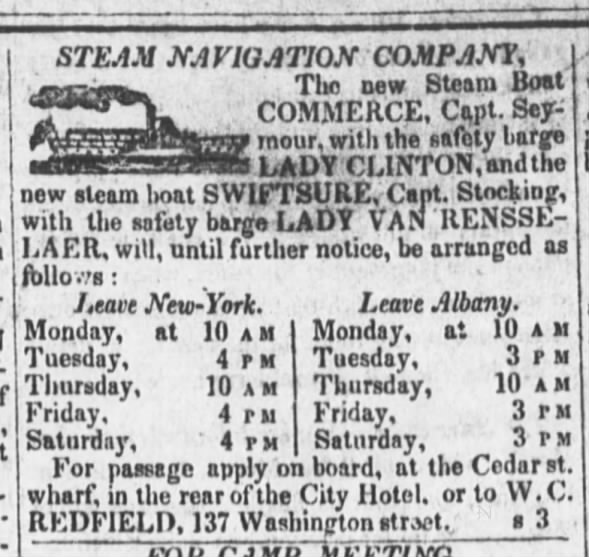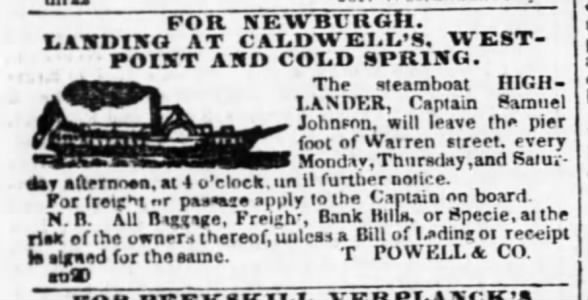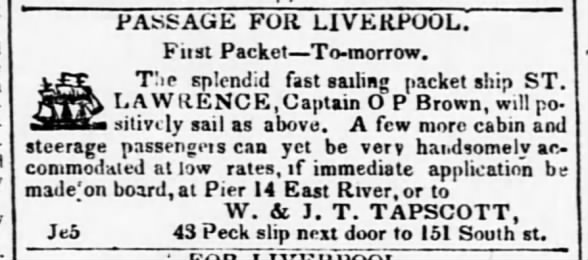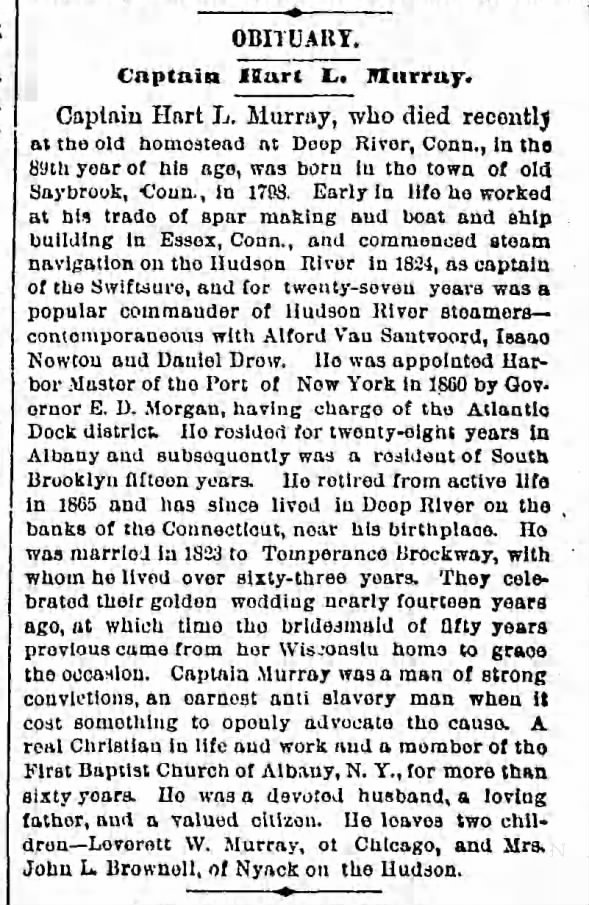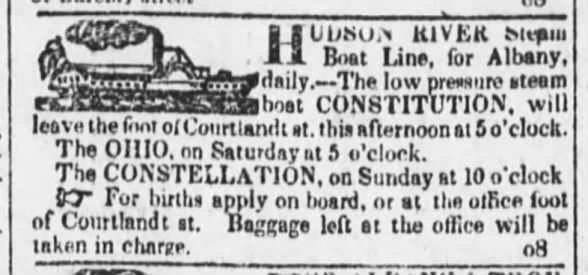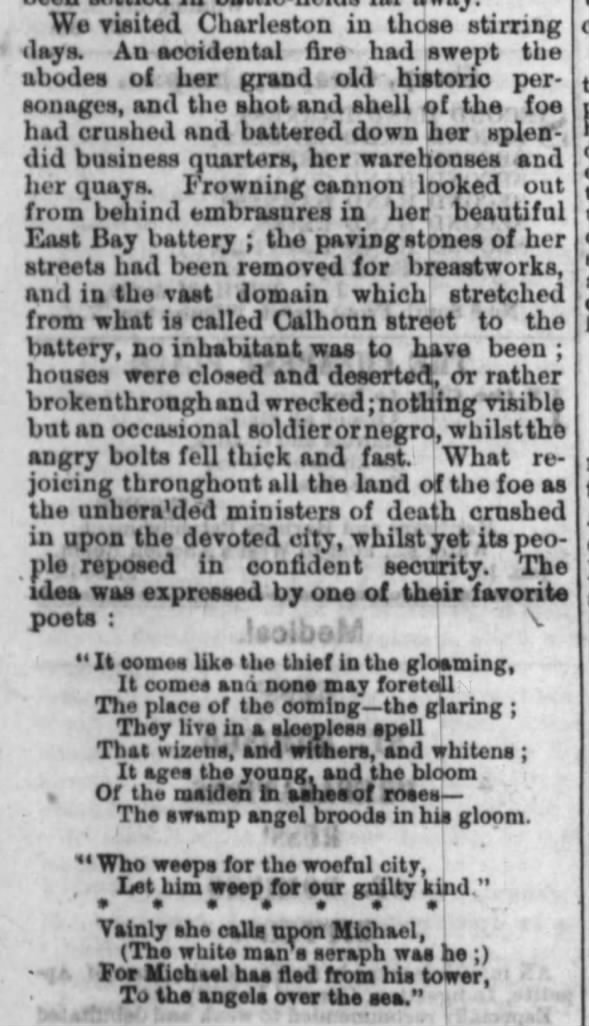 |
| Troy NY Daily Whig - November 13, 1851 via FultonHistory |
MOBY DICK; OR THE WHALE. BY HARMAN MELVILE. HARPER & BROTHERS.
The author of "Typee" and "Omoo" is an indefatigable as well as popular writer. The reading public (and that in this country comprises almost every body) had hardly ceased its expressions of admiration for "White Jackett" and its predecessors, when it is presented by the same author with a thick octavo volume of some 650 pages characterized by all that clearness and depth of observation, quaintness, and originality, which have served to give his previous productions such wide popularity. From a hasty glance at its pages, we predict that "Moby Dick" will be universally regarded as "Melville's best." [WM. H. YOUNG, 216 River-st.According to the masthead, the Troy Daily Whig was then owned and edited by Charles David Brigham (1819-1894).
Two days later, the Troy Daily Whig reprinted all of chapter 85, The Fountain under the heading "The Whale's Fountain. / From Herman Melville's New Work -- 'Moby-Dick.' "
Troy NY Daily Whig - November 15, 1851 via via FultonHistory
The Whale's Fountain.
From Herman Melville's New Work — "Moby Dick."
That for six thousand years—and no one knows how many millions of ages before—the great whales should have been spouting all over the sea, and sprinkling and mistifying the gardens of the deep, as with so many sprinkling or mistifying pots; and that for some centuries back, thousands of hunters should have been close by the fountain of the whale, watching these sprinklings and spoutings—that all this should be, and yet, that down to this blessed minute (fifteen and a quarter minutes past one o'clock P. M. of this sixteenth day of October, A. D. 1851,) it should still remain a problem, whether these spoutings are, after all, really water, or nothing but vapor—this is surely a noteworthy thing.The first paragraph features an intriguing variant in the month that Melville's narrator Ishmael gives when supposedly identifying the precise time of his writing on "this sixteenth day of December, A. D. 1851" in the first American edition, "1850" in Bentley's London edition. Published on November 15, 1851, the Troy Daily Whig version reads "October" instead of "December." The choice of "October" avoids the potential objection that Melville's narrator could not be writing the sentence a month after publication of the Harper edition. But the neat fix in the Daily Whig conveys a jolt of super-immediacy to contemporary readers that Melville might not have intended--unless the fix was somehow authorial, rather than strictly editorial. Another solution of the same textual problem would be to follow the British edition here, keeping "December" but emending "1851" to "1850," as in the 1988 Northwestern-Newberry Edition of Moby-Dick or The Whale.
The Buffalo, NY Western Literary Messenger version gives the same title, "The Whale's Fountain," and same credit line, "From Herman Melville's New Work—'Moby-Dick.'" Although published in February 1852, this text also reads "October" where the first British and American editions have "December."
Perhaps Western Literary Messenger editor Jesse Clement copied "The Whale's Fountain" from Charles D. Brigham's newspaper the Troy Daily Whig. Alternatively, both the Buffalo and Troy versions of chapter 85 in Moby-Dick with "October" instead of "December" could derive from a common exemplar.
Additional newspaper reprintings of "The Whale's Fountain" with the "October" variant:
- Rochester Daily American (Rochester, New York) November 21, 1851
 |
| Rochester NY Daily American - November 21, 1851 via genealogybank.com |
- Jamestown Journal (Jamestown, NY), January 2, 1852
- Northern New York Journal (Watertown, NY), January 14, 1852
 |
| "The Whale's Fountain." Troy Daily Whig, Nov. 15, 1851, 1 of 2 |
 |
| "The Whale's Fountain." 2 of 2 |
Related posts:
- Notice of Pierre in Troy Daily Whig
https://melvilliana.blogspot.com/2018/01/notice-of-pierre-in-troy-daily-whig.html
- Moby-Dick in the Western Literary Messenger
https://melvilliana.blogspot.com/2017/01/moby-dick-in-western-literary-messenger.html





